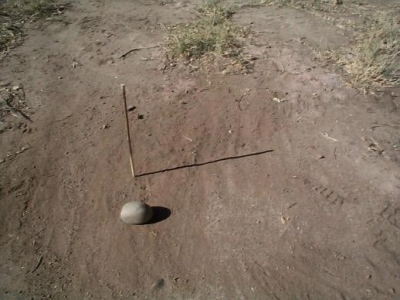
Early humans noticed that as the Sun passed overhead during the day, shadows moved around. By placing a row of evenly spaced stones in front of a stick, the moving shadow measured the time passing.
The first type of clock was a sundial, where they could see an object’s shadow move as the sun moved. The object that casts a shadow in the sundial is called a gnomon (Pronounce ‘gnomon’ like ‘Roman’ – but with an ‘n’ at the beginning; the ‘g’ is silent.) You know that the shadows made by the sun move as the hours go by: have you started playing in the shade of a tree and had to move as the shadow moved? Or sat on a beach under an umbrella and had to move to stay in its shadow?
As the Earth spins on its axis, the sun’s rays come to Earth at different angles, which cause the shadows to move. By marking where the shadows land throughout the day, you can see how amounts of time are shown by marking where an object’s shadow has moved.
The people who made the first clocks lived in the northern area of the Earth – the northern hemisphere – where the shadows cast by the sun move from left to right. When they built the first clocks, they made the hands move like the shadows of the sundial moved: from left to right.
Credit : Science Lesson
Picture Credit : Google




